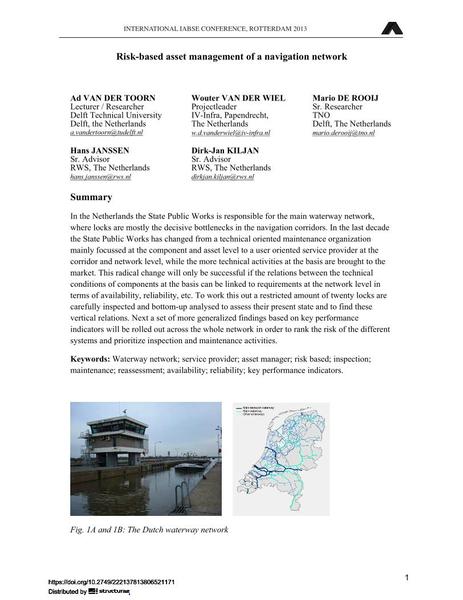Risk-based asset management of a navigation network

|
|
|||||||||||
Détails bibliographiques
| Auteur(s): |
Ad van der Toorn
Wouter van der Wiel Mario de Rooij Hans Janssen Dirk-Jan Kiljan |
||||
|---|---|---|---|---|---|
| Médium: | papier de conférence | ||||
| Langue(s): | anglais | ||||
| Conférence: | IABSE Conference: Assessment, Upgrading and Refurbishment of Infrastructures, Rotterdam, The Netherlands, 6-8 May 2013 | ||||
| Publié dans: | IABSE Conference, Rotterdam, May 2013 | ||||
|
|||||
| Page(s): | 480-481 | ||||
| Nombre total de pages (du PDF): | 8 | ||||
| Année: | 2013 | ||||
| DOI: | 10.2749/222137813806521171 | ||||
| Abstrait: |
In the Netherlands the State Public Works is responsible for the main waterway network, where locks are mostly the decisive bottlenecks in the navigation corridors. In the last decade the State Public Works has changed from a technical oriented maintenance organization mainly focussed at the component and asset level to a user oriented service provider at the corridor and network level, while the more technical activities at the basis are brought to the market. This radical change will only be successful if the relations between the technical conditions of components at the basis can be linked to requirements at the network level in terms of availability, reliability, etc. To work this out a restricted amount of twenty locks are carefully inspected and bottom-up analysed to assess their present state and to find these vertical relations. Next a set of more generalized findings based on key performance indicators will be rolled out across the whole network in order to rank the risk of the different systems and prioritize inspection and maintenance activities. |
||||
